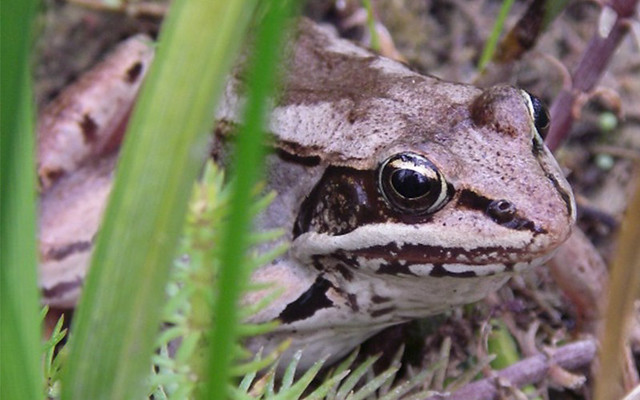The wood frog (Lithobates sylvaticus or Rana sylvatica[2]) has a broad distribution over North America, extending from the southern Appalachians to the boreal forest with several notable disjunct populations including lowland eastern North Carolina. The wood frog has garnered attention by biologists over the last century because of its freeze tolerance, relatively great degree of terrestrialism (for a ranid), interesting habitat associations (peat bogs, vernal pools, uplands), and relatively long-range movements. The ecology and conservation of the wood frog has attracted research attention in recent years because they are often considered “obligate” breeders in ephemeral wetlands (sometimes called “vernal pools”) that are themselves more imperiled than the species that breed in them. The wood frog has been proposed to be the official state amphibian of New York.[3]
(From: Wikipedia, April 2017)




